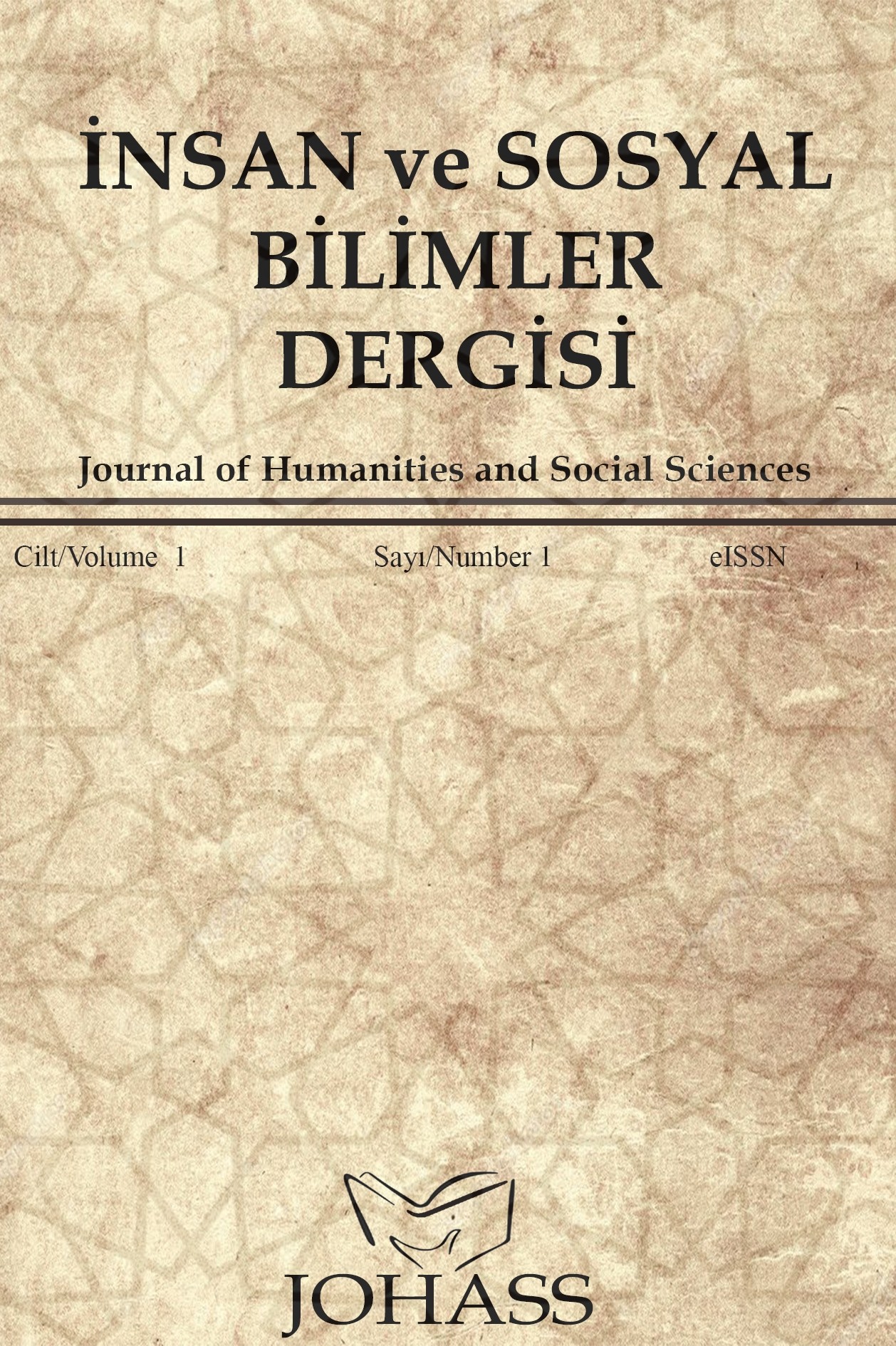Epistemophily and Women’s Temporality in Jeanette Winterson’s Sexing the Cherry
Jeanette Winterson’ın Vişnenin Cinsiyeti (1989) adlı eseri, epistemolojik ataerkil dile ve doğrusal zamansallığa alternatif olarak epistemofilik dil ve dairesel bir zaman yapısı kullanarak feminist bir tarih yorumu sunar. Romanda epistemofilik dil, tarihin döngüsel, akışkan ve sürekli olduğunu ve özel ve kamusal tarihler veya geçmiş, şimdi ve gelecek arasında katı ayrımlar olmadığını savunmak için kullanılır. Winterson, dişillikle ilişkilendirilen özel alan ile erillikle ilişkilendirilen kamusal alan arasındaki hiyerarşiyi ortadan kaldırmak için karakterlerin kişisel geçmişlerini kamusal tarih içinde ele alır. Ayrıca, her karakter tarihi kendi bakış açılarından yeniden yorumlayıp değerlendirdiği için tarihi öznel bir kavram olarak tasvir eder. Baskın epistemolojilerden ayrılan karakterler, tarihe öznel, feminen bir açıdan bakarak tarihin öznelliğini vurgularlar. Bu çalışma, epistemofili ve kadının zamansallığı üzerine yapılan tartışmalar ışığında, esas olarak Julia Kristeva'nın argümanlarına atıfta bulunarak, Winterson’ın Vişnenin Cinsiyeti adlı eserinin tarihi, şimdiye ve geleceğe uzanan geçmişin öznel bir yeniden yaratımı olarak tanımlayarak, tekilliği ve doğrusal zamansallığı destekleyen ataerkil epistemolojik dile karşı çıktığını göstermeyi amaçlar.
Anahtar Kelimeler:
Jeanette Winterson, Vişnenin Cinsiyeti, epistemofili, epistemoloji, kadının zamansallığı
Epistemophily and Women’s Temporality in Jeanette Winterson’s Sexing the Cherry
Jeanette Winterson’s Sexing the Cherry (1989) offers a feminist interpretation of history by using epistemophilic language and a circular time structure as alternatives to epistemological patriarchal language and linear temporality. Epistemophilic language is used in the novel to argue that history is cyclical, fluid, and continuous, and there are not strict divisions between private and public histories, or between the past, present, and future. Winterson evaluates the personal histories of characters within the public history to remove the hierarchy between the private, which is associated with the feminine, and the public, which is associated with the masculine. Moreover, she depicts history as a subjective notion as each character reinterprets and re-evaluates history from their own perspectives. Characters that deviate from the dominant epistemologies emphasise the subjectivity of history by looking at history from a subjective, feminine perspective. In the light of the discussions on epistemophily and women’s temporality, mainly referring to the arguments of Julia Kristeva, this study aims to demonstrate that Winterson’s Sexing the Cherry challenges patriarchal epistemological language that favours singularity and linear temporality based on separation and divisions by describing history as a subjective recreation of the past which flows into the present and future.
___
- Baggio, G. (2010). Gemma CORRADI FIUMARA, Spontaneity. A Psychoanalytic Inquiry. European Journal of Pragmatism and American Philosophy, 2(2), 1-11.
- Browne, S. R. (2012). A brief anthology of English literature: From Marlowe to Swift (Vol. 2). Perseus.
- Bucholz, R. O., & Ward, J. P. (2012). London: A social and cultural history, 1550-1750. Cambridge University Press.
- Elias, M. L., & Elias, J. (2000). Barbados. Marshall Cavendish.
- Fitzmaurice, A. (2003). Humanism and America: An intellectual history of English colonisation, 1500–1625. Cambridge University Press.
- Fiumara, G. C. (2003). The development of hermeneutic prospects. In L. Code (Ed.), Feminist interpretations of Hans-georg Gadamer (pp. 133-148). Penn State Press.
- Fiumara, G. C. (2009). Spontaneity: A psychoanalytic inquiry. Routledge.
- Fiumara, G. C. (2014). The mind’s affective life: A psychoanalytic and philosophical inquiry.
- Freud, S. (1997). Theoretical. In D. J. Stein & M. H. Stone (Eds.), Essential papers on obsessive- compulsive disorder (pp. 45-64). NYU Press.
- Kırca, M. (2009). Postmodernist historical novels: Jeanette Winterson’s and Salman Rushdie’s novels as historiographic metafictions [Unpublished doctoral dissertation]. Middle East Technical University.
- Klein, M. (2011). Love, guilt and reparation. Random House.
- Kohn, G. C. (2001). Encyclopedia of plague and Pestilence: From ancient times to the present. Facts on File.
- Kristeva, J. (1981). Women’s time. Signs, 7(1), 13-35. http://www.jstor.org/stable/3173503
- Langland, E. (1997). Sexing the Text: Narrative Drag as Feminist Poetics and Politics in Jeanette Winterson’s Sexing the Cherry. Narrative, 5(1), 99-107.
- Language, Literature, and Interdisciplinary Studies (LLIDS), 1(4), 1-18.
- Malhotra, I. (2013). Jeanette Winterson’s Fiction: A Postmodernist Fabulation. International Journal of English and Education, 2(2), 478-489.
- Reid, S. (1999). Scots armies of the English civil wars. Osprey Military.
- Rudberg, M. (1997). The researching body: the epistemophilic project. In K. Davis (Ed.), Embodied practices: Feminist perspectives on the body (pp. 182-202). SAGE.
- Said, E. W. (1994). Culture and imperialism. Vintage.
- Sancheti, P. (2018). Postmodernist Poetics in Jeanette Winterson’s Sexing the Cherry.
- Winterson, J. (2001). Sexing the cherry. Vintage.
- ISSN: 2667-4343
- Yayın Aralığı: Yılda 2 Sayı
- Başlangıç: 2018
- Yayıncı: Bilgiçağı Eğitim Danışmanlık ve Yayıncılık Sanayi Ticaret Limited Şirketi
Sayıdaki Diğer Makaleler
Hacer EFE, Hatice TURAN, Ünsal UMDU TOPSAKAL
A review on Risk Reduction Potentials of Artificial Intelligence in Humanitarian Aid Sector
Epistemophily and Women’s Temporality in Jeanette Winterson’s Sexing the Cherry
Perspective on Child Labor Situation in terms of Occupational Health and Safety: The Case of Turkey
